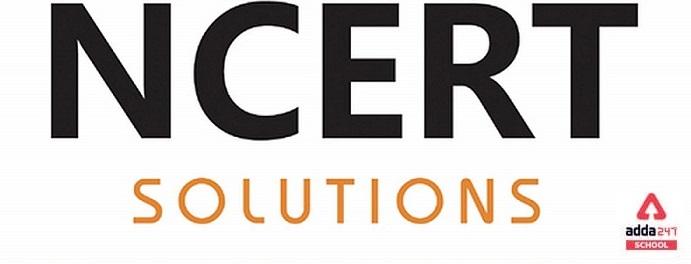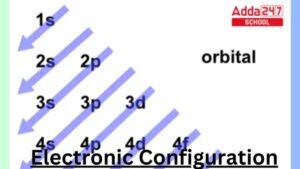Table of Contents
Ncert Solutions For Class 11 Biology Chapter 16 in English
Adda 247 provides NCERT Solutions for the Class 11 Biology Chapter 16 which is for the students who want to go ahead in life and achieve great marks in their examinations. The NCERT Solutions for class 11 Biology chapter 16 are provided by the teachers who are experts of their subjects. The solutions are set according to the rules formulated by the NCERT class 11 biology and in the language that can be understood by every student. By reading the solutions students can build up a strong base easily. The NCERT class 11 Biology solutions cover chapters 1 to 22 with the important questions and the answers in a detailed way.
Examinations can be threatening for some people, a proper learning of the concepts is the key to crack the examination. Students rely on the solutions of the NCERT provided by Adda 247. The solutions are formulated by the experts of the subjects who have tremendous knowledge in their subjects.
These NCERT Solutions of class 11 help the students to get familiarized with the textbooks. The students can access the solutions anywhere while browsing the web easily. The solutions are very precise and accurate.
NCERT Solutions for Class 11 Biology Chapter 16 – Digestion and Absorption
The NCERT Solutions for Class 11 Biology Chapter 16 provides information about Digestion and Absorption. The process of conversion of complex food substances to simple absorbable forms is called digestion. Intracellular: When the process of digestion occurs within the cell in the food vacuole. Examples: Protozoa, Porifera, Coelenterata, and free-living Platyhelminthes. Extracellular: When the process of digestion occurs outside the cell, Examples: Coelenterates and phylum Platyhelminthes to phylum Chordata. Digestion in vertebrates occurs in the digestive tract or alimentary canal. The various parts involved in indigestion can be broadly grouped into two groups – The digestive tract or alimentary canal, Digestive glands.
Features of the NCERT Solutions for Class 11 Biology Chapter 16 – Digestion and Absorption
NCERT Solutions of class 11 have been answered based on the important information on the question.
- The columns are used wherever necessary.
- Solutions are solved point wise and accurately answered point to point.
Important Questions NCERT Solutions for Class 11 Biology Chapter 16
Question 1. Choose the correct answer among the following: (a) Gastric juice contains
(i) pepsin, lipase and rennin
(ii) trypsin, lipase and rennin
(iii) trypsin, pepsin and lipase
(iv) trypsin, pepsin and renin
(b) Succus entericus is the name given to
(i) a junction between ileum and large intestine
(ii) intestinal juice
(iii) swelling in the gut
(iv) appendix
Answer:
(a): (i) Pepsin, lipase, and rennin
Gastric juice contains pepsin, lipase, and rennin. Pepsin is secreted in an inactive form as pepsinogen, which is activated by HCl. Pepsin digests proteins into peptones. Lipase breaks down fats into fatty acids. Rennin is a proteolytic enzyme present in the gastric juice. It helps in the coagulation of milk.
(b): (ii) Intestinal juice
Succus entericus is another name for intestinal juice. It is secreted by the intestinal gland. Intestinal juice contains a variety of enzymes such as maltase, lipases, nucleosidases, dipeptidases, etc.
Question 2. Match column I with column II
| Column I | Column II |
| (a) Bilirubin and biliverdin | (i) Parotid |
| (b) Hydrolysis of starch | (ii) Bile |
| (c) Digestion of fat | (iii) Lipases |
| (d) Salivary gland | (iv) Amylases |
Answer:
| Column I | Column II |
| (a) Bilirubin and biliverdin | (ii) Bile |
| (b) Hydrolysis of starch | (iv) Amylases |
| (c) Digestion of fat | (iii) Lipases |
| (d) Salivary gland | (i) Parotid |
Question 3. Answer briefly:
(a) Why are villi present in the intestine and not in the stomach?
(b) How does pepsinogen change into its active form?
(c) What are the basic layers of the wall of alimentary canal?
(d) How does bile help in the digestion of fats?
Answer:
(a) The mucosal wall of the small intestine forms millions of tiny finger-like projections known as villi. These villi increase the surface area for more efficient food absorption.
Within these villi, there are numerous blood vessels that absorb the digested products of proteins and carbohydrates, carrying them to the blood stream. The villi also contain lymph vessels for absorbing the products of fat-digestion. From the blood stream, the absorbed food is finally delivered to each and every cell of the body. The mucosal walls of the stomach form irregular folds known as rugae. These help increase the surface area to volume ratio of the expanding stomach.
(b) Pepsinogen is a precursor of pepsin stored in the stomach walls. It is converted into pepsin by hydrochloric acid. Pepsin is the activated in the form of pepsinogen.
Pepsinogen (inactive) → Pepsin (Active) +Inactive peptide
(c) The walls of the alimentary canal are made up of four layers. These are as follows:
(i) Serosa is the outermost layer of the human alimentary canal. It is made up of a thin layer of secretory epithelial cells, with some connective tissues underneath.
(ii) Muscularis is a thin layer of smooth muscles arranged into an outer longitudinal layer and an inner circular layer.
(iii) Sub-mucosa is a layer of loose connective tissues, containing nerves, blood, and lymph vessels. It supports the mucosa.
iv. Mucosa is the innermost lining of the lumen of the alimentary canal. It is mainly involved in absorption and secretion.
(d) Bile is a digestive juice secreted by the liver and stored in the gall bladder. Bile juice has bile salts such as bilirubin and biliverdin. These break down large fat globules into smaller globules so that the pancreatic enzymes can easily act on them. This process is known as emulsification of fats. Bile juice also makes the medium alkaline and activates lipase.
Question 4. State the role of pancreatic juice in digestion of proteins.
Answer: The pancreatic juice has inactive enzymes – trypsinogen, chymotrypsinogen,
procarboxypeptidases, amylases, lipases and nucleases.
(i) Proteins, proteoses and peptones in the chyme reaching the intestine are acted upon by the proteolytic enzymes of pancreatic juice.
(ii) Carbohydrates in the chyme are hydrolysed by pancreatic amylase into disaccharides.
(iii) Fats are broken down by lipases.
(iv) Nucleases in the pancreatic juice acts on nucleic acids to form nucleotides and nucleosides.
Question 5. Describe the process of digestion of protein in stomach.
Answer: Stomach is the first organ where the digestion of proteins starts while the small intestine is the part where protein digestion ends. Stomach possess gastric glands which secret gastric juices containing enzymes that act on food. Gastric juice mainly contains hydrochloric acid, pepsinogen, mucus, and rennin. Firstly, the food that enters the stomach becomes acidic when it mixes with the gastric juice. The function of these components in protein digestion is as follows:
- Hydrochloric acid dissolves the food particle and creates an acidic medium inside the stomach. Acidic medium is a pre-requisite for the conversion of inactive enzyme pepsinogen into active pepsin. .
- Pepsin is a protein-digesting enzyme that converts proteins into proteases and peptides.
- Rennin which plays an important part in the coagulation of milk is a proteolytic enzyme which is released as prorennin i.e. inactive rennin.
Question 6. Give the dental formula of human beings.
Answer: The dental formula represents the arrangement of teeth in each half of the upper and the lower jaw. The entire formula is multiplied by two to represent the total number of teeth.
The dental formula for milk teeth in humans is: 2102/2102*2=20
Each half of the upper jaw and the lower jaw has 2 incisors, 1 canine, and 2 molars. Premolars are absent in milk teeth hence the zero.
The dental formula for permanent teeth in humans is: 2123/2123*2=32
Each half of the upper jaw and the lower jaw has 2 incisors, 1 canine, 2 premolars, and 3 molars. An adult human has 32 permanent teeth.
Question 7. Bile juice contains no digestive enzymes, yet it is important for digestion. Why?
Answer: Bile juice does not contain any enzyme but it contains bile pigments, bile salts, cholesterol, and phospholipids. The important role played by these enzymes is that it helps in the emulsification of fats where the fat molecules are broken down into small micelles.
Question 8. Describe the digestive role of chymotrypsin. Which two other digestive enzymes of the same category are secreted by its source gland?
Answer: Chymotrypsin is the active form of chymotrypsinogen. It is activated by trypsin. It curdles milk. Nucleases like DNAase and RNAase and pancreatic lipase are other enzymes secreted by the pancreas.
Question 9. How are polysaccharides and disaccharides digested?
Answer: The digestion of carbohydrates takes place in the mouth and the small intestine region of the alimentary canal. The enzymes that act on carbohydrates are collectively known as carbohydrases.
(i) Digestion in the mouth:
As food enters the mouth, it gets mixed with saliva. Saliva – secreted by the salivary glands – contains a digestive enzyme called salivary amylase. This enzyme breaks down starch into sugar at pH 6.8.
Starch pH 6.8→Salivary amplase Maltose + Isomaltose + Limit dextrins
Salivary amylase continues to act in the oesophagus, but its action stops in the stomach as the contents become acidic. Hence, carbohydrate-digestion stops in the stomach.
(ii) Digestion in the small intestine:
Carbohydrate-digestion is resumed in the small intestine. Here, the food gets mixed with the pancreatic juice and the intestinal juice. Pancreatic juice contains the pancreatic amylase that hydrolyses the polysaccharides into disaccharides.
(Polysaccharides) Starch →Disaccharides ; Amylase catalyses this reaction.
Similarly, the intestinal juice contains a variety of enzymes (disaccharidases such as maltase, lactase, sucrase, etc.). These disaccharidases help in the digestion of disaccharides. The digestion of carbohydrates is completed in the small intestine.
Maltose →2Glucose ; Maltase catalyses this reaction.
Lactose →Glucose + Galactose ; Lactase catalyses this reaction. Sucrose →Glucose + Fructose ; Sucrase catalyses this reaction.
Question 10. What would happen if HCl were not secreted in the stomach?
Answer: Hydrochloric acid is essential to make the medium acidic which allows inactive enzyme pepsinogen to be converted into pepsin. Pepsin plays an important role in the digestion of proteins. Moreover, it also kills various microbes which may be present in food. These actions would not be possible in the absence of hydrochloric acid.


 CLAT Admit Card 2025 Download Link Out a...
CLAT Admit Card 2025 Download Link Out a...
 Cu Electron Configuration, Copper Electr...
Cu Electron Configuration, Copper Electr...
 Electronic Configuration- Check Electron...
Electronic Configuration- Check Electron...






























